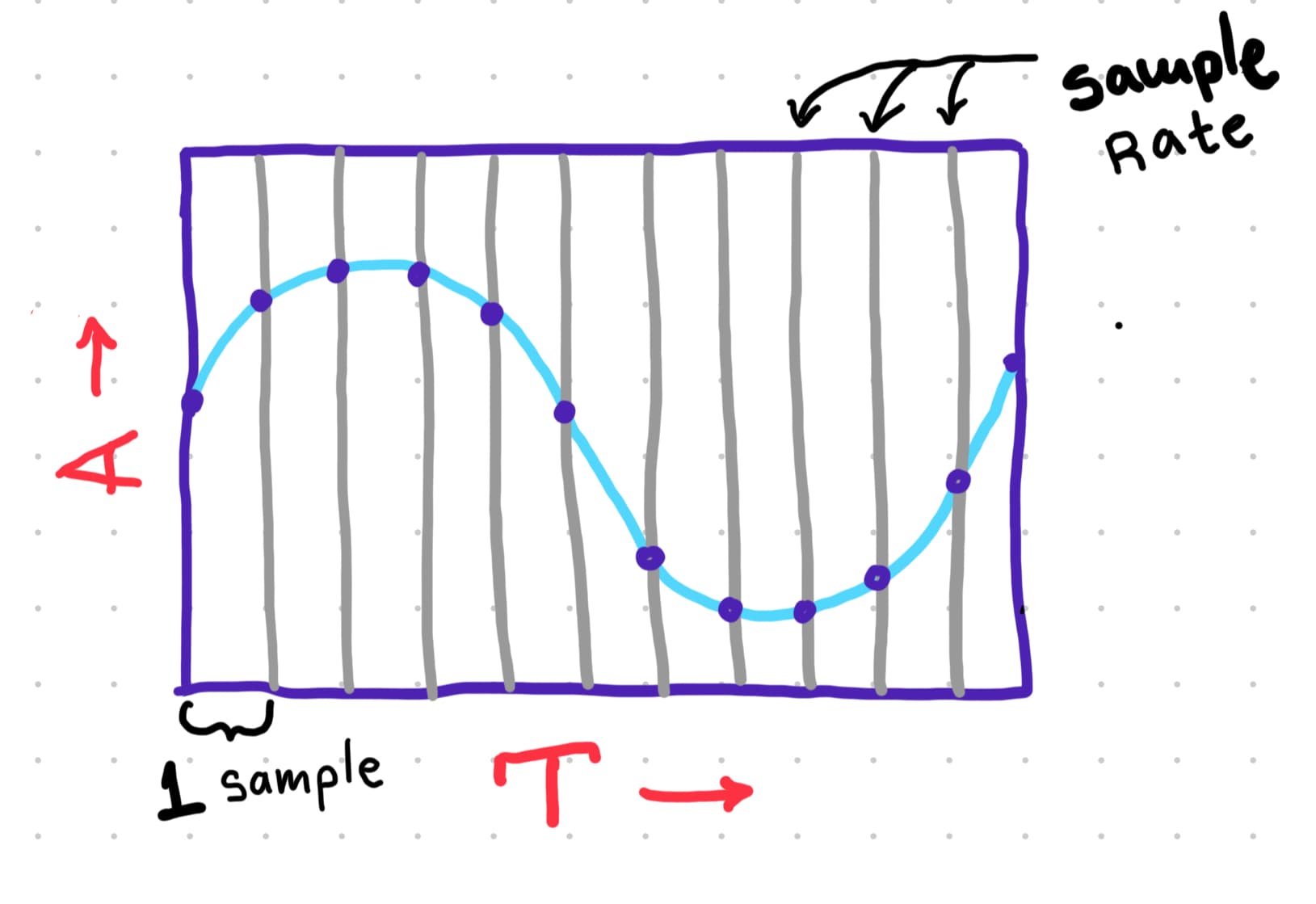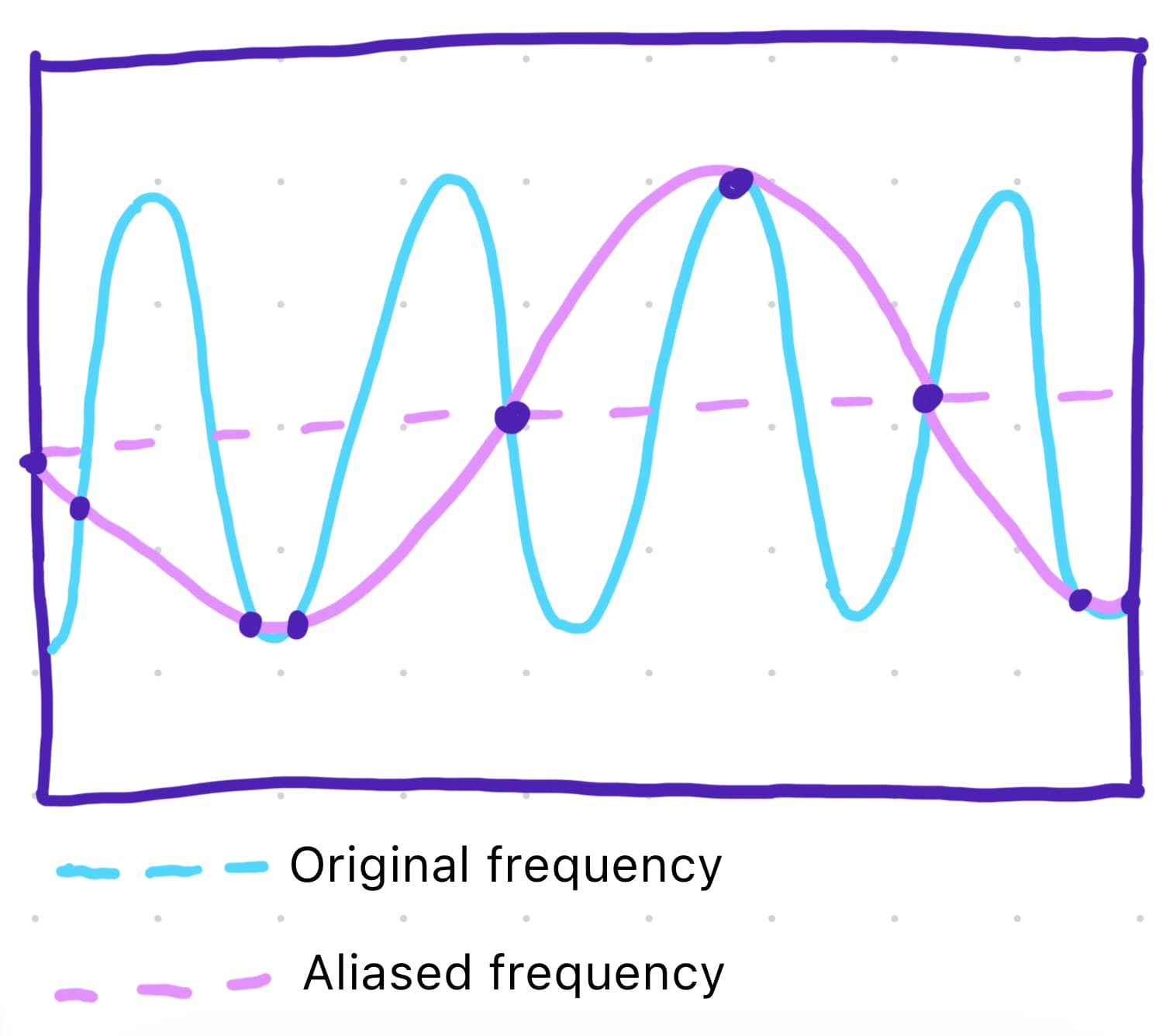- Published on
What is Oversampling?
- Authors

- Name
- Desi Ilieva
Introduction
- If you’ve ever used a plugin with an ‘Oversampling’ toggle, you might have wondered what it actually does — and whether it matters.
In this article we’ll break down what oversampling is, why it exists, and how it affects audio quality and CPU usage.
- Sampling in Digital Audio
- Why do we use oversampling?
- What is oversampling?
- The Pros and Cons
- Common Use Cases in Plugins
- Summary
Sampling in Digital Audio
As you all know when we process digital audio we use basically the few same sampling rates (44.1kHz, 48kHz, ... 384 kHz or sometimes even more!). But most of the times we use from 44.1 to 192kHz.
Why do we use these sampling rates?
-> Because of the Nyquist theorem that says:
- to reproduce correctly a digital signal, sample it at twice the highest frequency present in the signal.
f(sampling frequency) >= 2 * f(max)
If we assume the human hearing range spans approximately 20 Hz to 20 kHz, then in order to capture all audible frequencies we must sample at least at twice the maximum frequency of interest. This means a minimum sampling rate of 40 kHz.
In practice, standard audio uses 44.1 kHz or 48 kHz to ensure headroom and account for imperfect filtering.
-> To visualize this, imagine plotting a sine wave on a grid where the y-axis represents amplitude and the x-axis represents time.

- The sampling rate corresponds to the spacing of the vertical grid lines. As the sampling rate increases, the grid lines get closer together, which means more data points are captured per second, resulting in a more accurate digital representation of the waveform.
In complex signals we have multiple sinusoids engaged and depending on the input signal, effects and other factors, not always we can confirm only frequencies below f(max) will enter.
Why do we use oversampling?
However, sometimes the signal can have unexpected frequencies coming over that range.
When a frequency higher than f(max) enters the system, it folds back into the audible range — this unwanted reflection is called aliasing.

Aliasing can come from many places — an analog source being recorded, or more commonly, from nonlinear processing inside plugins (like distortion, saturation, or compression).
By increasing the internal processing rate, oversampling pushes those unwanted aliasing artifacts far above the audible range. Once the signal has been processed at this higher rate, it’s brought back down to the original sampling rate — now much cleaner and with fewer aliasing issues.
To prevent this, one of the simplest and most effective tools we have is oversampling.
What is oversampling?
Oversampling is the process of increasing the sampling frequency before digital signal processing (DSP) and reducing it back to the original rate afterward.Here's a bit pseudo-code explaining the process:
Upsampling by multiplying the current sample rate by the oversampling factor (ex. f(oversampled) = 44100 * 16 = 705.6kHz):
f(oversampled) = f(sampling rate) * M(oversampling factor)
Downsampling by dividing the oversampled sample rate by the oversampling factor which returns us To the original sample rate(ex. f(downsampled/original) = 705.6kHz / 16 = 44.1kHz):
f(downsampled) = f(oversampled) / M(oversampling factor)
Total oversampling process passes as following:
[f(oversampled)] -> [DSP] -> [f(downsampled)]
Typical oversampling factors include:
x2 = f(sampling frequency) * 2
x4 = f(sampling frequency) * 4
x8 = f(sampling frequency) * 8
x16 = f(sampling frequency) * 16
The Pros and Cons
Like everything in the world, oversampling has it's pros and cons and should be used cautiously.
Pros:
- cleaner sound
- less aliasing
- better overall fidelity
Cons:
- higher CPU usage
- possible added latency
The higher the oversampling factor, the better the quality — but also the heavier the CPU load. Depending on the machine (and your project), one must find balance between sound quality and performance.
Common Use Cases in Plugins
Oversampling isn’t always necessary — but in certain types of plugins, it makes a huge difference.
Distortion / Saturation / Overdrive- These are the biggest culprits for aliasing. Any time you’re generating harmonics (especially in high frequencies), oversampling helps keep that top end clean instead of crunchy in a bad way.
- A lot of analog-style oscillators and filters produce nonlinearities that can alias. Running them at a higher internal sampling rate keeps those harmonics smooth and natural.
- When a filter gets aggressive — 48 dB/oct or higher — oversampling helps maintain accuracy near the Nyquist limit and prevents weird phase behavior.
- These often involve fast, nonlinear processes that can introduce distortion. Oversampling helps keep those peaks transparent and less “digital.”
Summary
Oversampling is just a cool process that lets your DSP work at higher internal rates for cleaner results. It reduces aliasing and distortion artifacts, but it comes at a CPU cost.
Whether you’re coding a plugin or just toggling the option in your mix, understanding what it does gives you actual knowledge power.